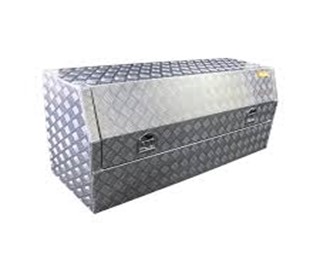Unleashing the Power of Elementor: A Comprehensive Guide to Website Design with the Best Fonts

In the realm of WordPress website development, Elementor has emerged as a game-changer, empowering users to create stunning websites with ease and flexibility. With its intuitive drag-and-drop interface and extensive customization options, Elementor has revolutionized the way websites are designed and built. In this guide, we’ll explore the capabilities of Elementor and delve into the art of selecting the best fonts for web design to enhance the visual appeal and readability of your website.
Understanding Elementor: A Brief Overview
Elementor is a popular page builder plugin for WordPress that allows users to design and customize their websites visually, without the need for coding knowledge. With its live editor, users can see the changes they make in real-time, making the design process efficient and user-friendly.
Key features of Elementor include:
- Drag-and-Drop Interface: Elementor’s intuitive interface enables users to add, rearrange, and customize elements on their web pages effortlessly.
- Template Library: Elementor offers a vast library of pre-designed templates for various website sections, including headers, footers, and individual pages, providing users with a starting point for their designs.
- Widgets and Elements: Elementor comes with a wide range of widgets and elements, such as text, images, videos, buttons, forms, and more, allowing users to add functionality and interactivity to their websites.
- Responsive Design: Elementor ensures that websites created with the plugin are fully responsive, meaning they adapt seamlessly to different screen sizes and devices.
The Importance of Fonts in Web Design
Fonts play a crucial role in web design, influencing the overall look and feel of a website and impacting readability and user experience. The choice of fonts can convey the brand’s personality, evoke emotions, and guide users’ attention to important content. When selecting fonts for your website, consider factors such as readability, legibility, scalability, and compatibility with different devices and browsers.
Choosing the Best Fonts for Web Design
1. Serif vs. Sans Serif:
Serif fonts are characterized by small decorative flourishes or strokes at the end of letter strokes, while sans serif fonts are clean and minimalist, without these embellishments. Serif fonts are often associated with tradition, elegance, and formality, making them suitable for websites with a classic or professional aesthetic. Sans serif fonts, on the other hand, are modern, clean, and easy to read, making them ideal for websites that prioritize simplicity and clarity.
2. Readability and Legibility:
When choosing fonts for your website, prioritize readability and legibility. Select fonts that are easy to read, even at smaller sizes and on different screens. Avoid overly decorative or elaborate fonts that may hinder readability, especially for longer passages of text.
3. Font Pairing:
Experiment with font pairing to create visual contrast and hierarchy in your design. Pair a bold, attention-grabbing font for headings and titles with a simpler, more legible font for body text. Aim for complementary fonts that harmonize well together and create a cohesive look and feel for your website.
4. Brand Consistency:
Choose fonts that align with your brand’s personality, values, and identity. Consistency in font usage across your website reinforces brand recognition and strengthens your brand’s visual identity. Consider creating a brand style guide that outlines the fonts to be used across various channels and materials to maintain consistency and cohesion.
Integrating Fonts into Elementor Designs
With Elementor, incorporating fonts into your website design is seamless and straightforward. Here’s how you can leverage Elementor’s features to enhance your design with the best fonts:
- Google Fonts Integration: Elementor offers built-in integration with Google Fonts, giving users access to a vast library of free, high-quality fonts to choose from. Simply select the “Typography” settings for your desired element and choose your preferred font from the Google Fonts dropdown menu.
- Custom Fonts Support: In addition to Google Fonts, Elementor also supports custom fonts, allowing users to upload and use their own font files (.woff or .woff2 formats) for a truly unique and personalized design.
- Typography Controls: Elementor provides extensive typography controls, allowing users to customize various aspects of font styling, including font size, weight, style, line height, letter spacing, and more. Experiment with these controls to achieve the perfect balance of readability and aesthetics for your website.
Best Practices for Font Usage in Web Design
To ensure optimal readability and visual appeal, keep the following best practices in mind when using fonts in your Elementor designs:
- Limit the Number of Fonts: Avoid using too many different fonts on your website, as this can create visual clutter and confusion. Stick to a cohesive set of fonts for consistency and readability.
- Hierarchy and Emphasis: Use font size, weight, and style to create hierarchy and emphasis within your design. Reserve bold or italicized fonts for important headings and calls to action to draw attention to key content.
- Whitespace and Line Length: Pay attention to whitespace and line length to enhance readability and reduce eye strain. Optimal line length for body text is typically 50-75 characters per line, and generous whitespace around text blocks improves legibility.
- Accessibility: Ensure that your chosen fonts meet accessibility standards by being legible and easy to read for users with visual impairments. Avoid low-contrast font combinations and provide alternative text for images containing important information.
Conclusion
In conclusion, Elementor empowers WordPress users to create visually stunning and highly customizable websites with ease. By leveraging Elementor’s intuitive interface and extensive customization options, you can design a website that reflects your brand’s identity and engages your audience effectively. When it comes to font selection, prioritize readability, legibility, and brand consistency to create a memorable and visually appealing user experience. With the right fonts and Elementor’s powerful design tools, you can elevate your website to new heights and leave a lasting impression on your visitors.



